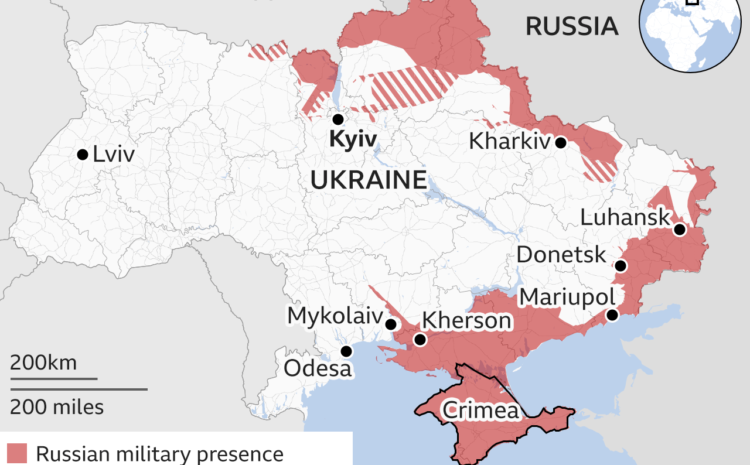
Ukraine map
By The Visual Journalism Team
BBC News
Russian troops have made significant advances, with Ukrainian forces and civilians under heavy bombardment.
Here are the latest developments on day 12 of the invasion:
- Russia’s latest ceasefire proposal for cities including Kyiv has been branded “immoral” by Ukraine
- Russia said civilians could leave, but mainly on routes to Belarus or Russia itself.
- Hundreds of thousands of people are trapped in cities under heavy bombardment.
- Ukraine says Russian forces are preparing for an assault on Kyiv.
Russia launched its attack in the early hours of 24 February from three main directions: north, south and east.
Some 95% of the troops positioned around Ukraine in the build-up to the invasion are now on Ukrainian territory, according to US officials.
Targets all over the country have been attacked from land, sea and air.
On Monday, Russia proposed a number of humanitarian corridors from key cities.
But four of the six proposed routes to safety went to Russia in the east, or to Belarus, its key ally, to the north.
Ukraine condemned this condition as “completely immoral”.
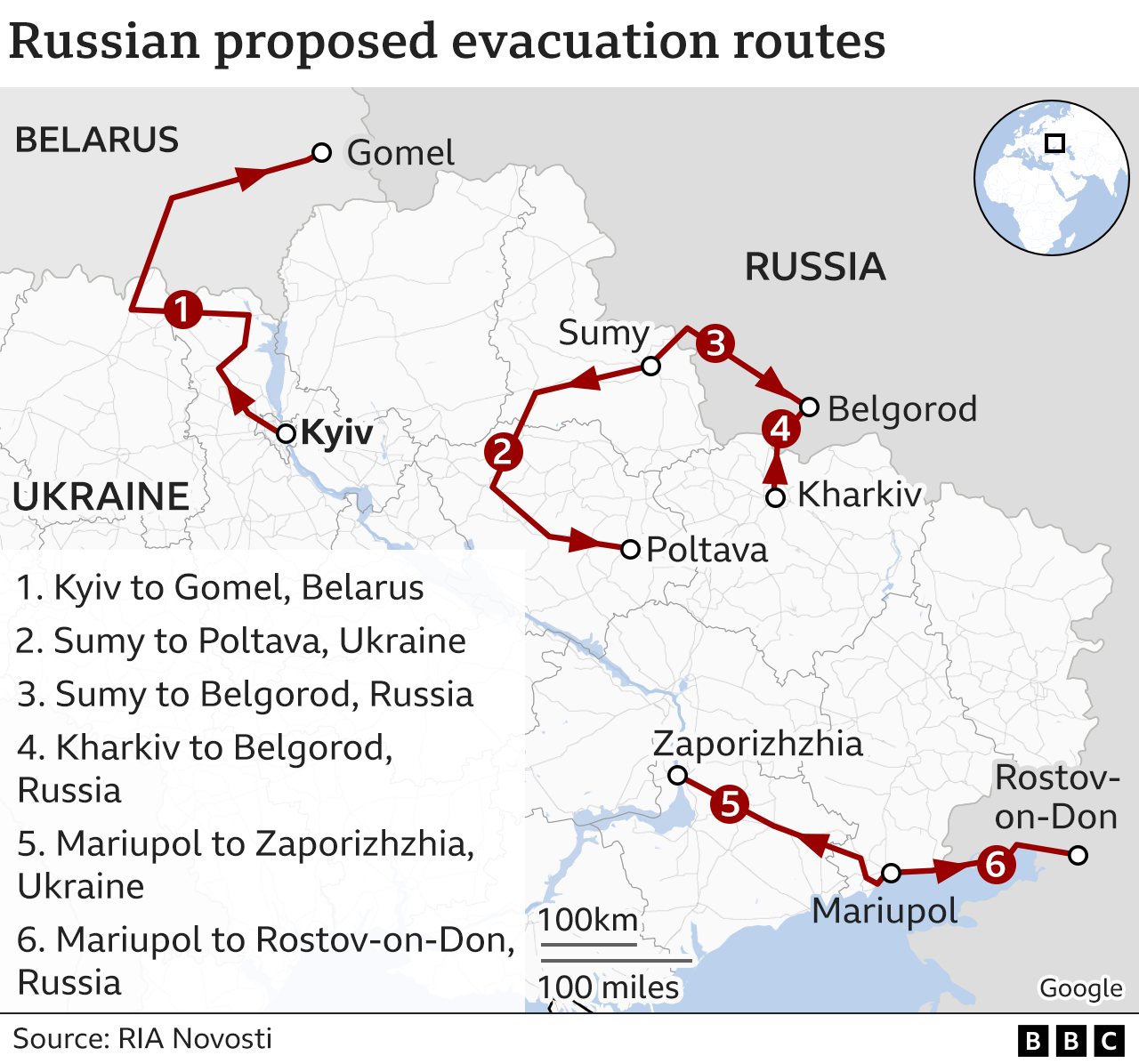
The fight for Kyiv
There has been intense shelling in recent days in areas to the north-west of Kyiv.
Irpin has seen some 2,000 civilians flee, with some killed as a heavy Russian bombardment continued.
Targets around the centre of the city have been struck from the air, but ground forces have not advanced beyond the suburbs.
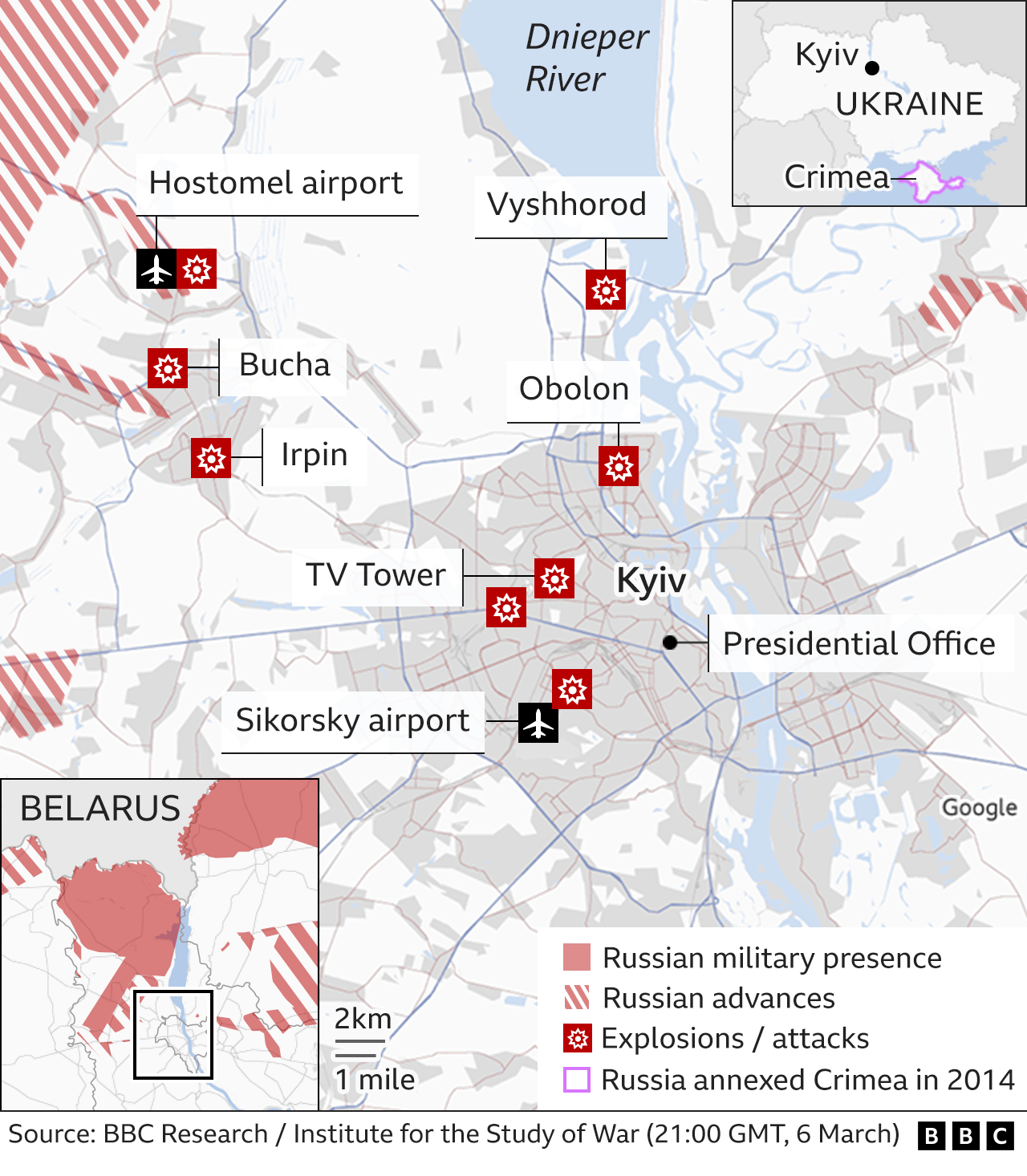
The UK Ministry of Defence (MoD) says the front of a long convoy of Russian military vehicles remains in this area and has made little progress in recent days.

War in Ukraine: More coverage
- LIVE: Latest updates from on the ground
- IN KYIV: Locals fear another Grozny or Aleppo
- ANALYSIS: Europe finally steps up
- EXPLAINED: Why Putin has invaded Ukraine?
- IN DEPTH: Full coverage of the conflict

Strike from the north
Russian troops initially made quick gains, advancing from Belarus down the west side of the Dnieper river via Chernobyl.
However, the MoD says the main body of the large Russian column advancing on Kyiv remains over 30km (19 miles) from the centre of the city.
To the north-east of Kyiv, Chernihiv is still under intense bombardment, according to Ukraine’s military, with several residential areas reduced to rubble.
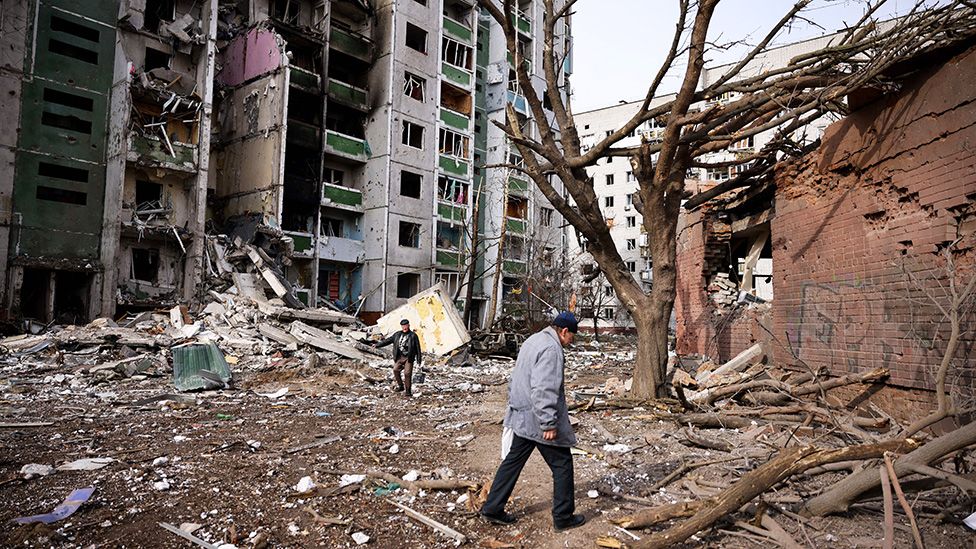 IMAGE SOURCE,GETTY IMAGES
IMAGE SOURCE,GETTY IMAGES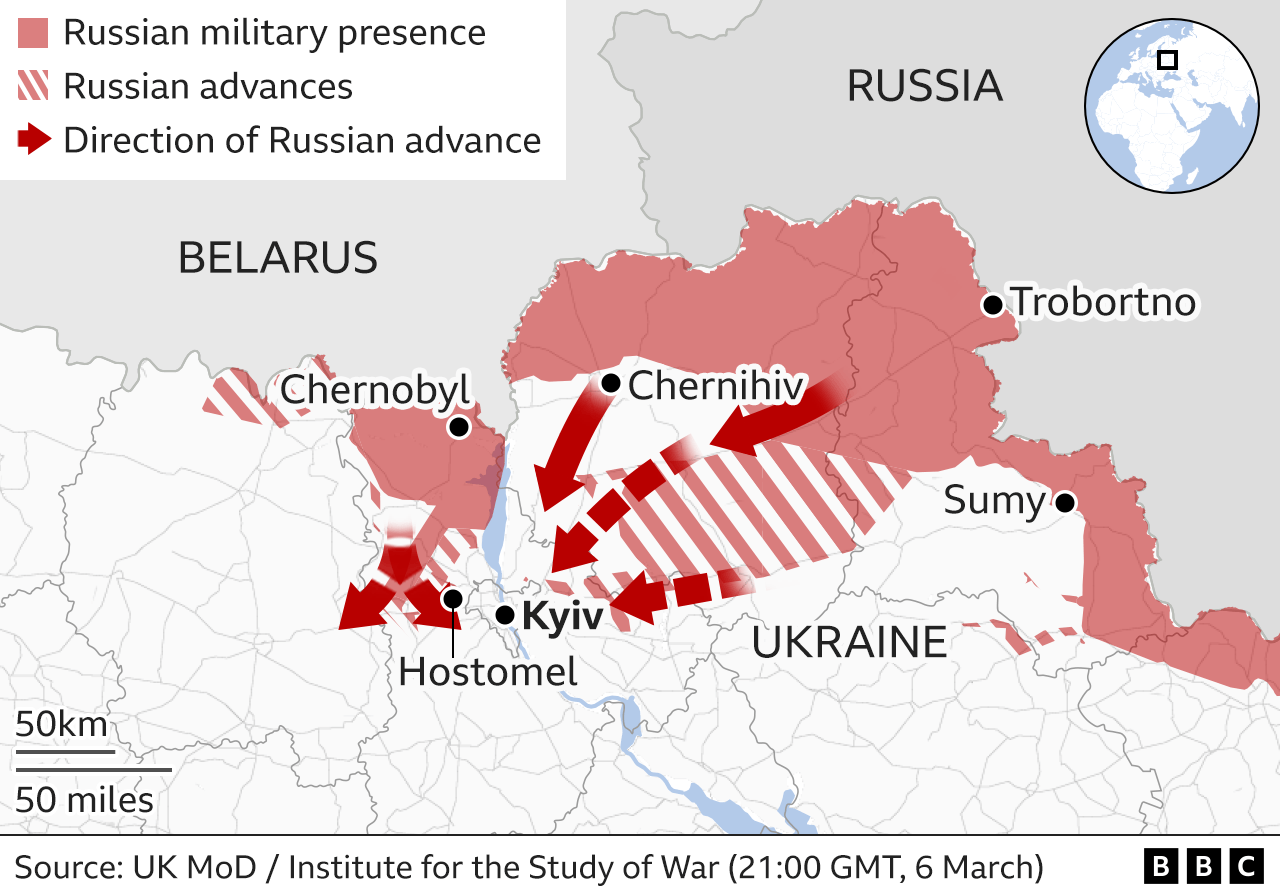
Russian forces have also been advancing on the Ukrainian capital from further east.
A large Russian force had gathered around Troebortno in the days leading up to the invasion.
There has also been intense fighting around Hostomel airport, which has changed hands times several times.
Strike from the south
In the south, there is growing concern for tens of thousands of civilians trapped in the port city of Mariupol.
Two attempts to evacuate them over the weekend ended in failure with Russia and Ukraine accusing each other of violating a humanitarian ceasefire.
Reports say there is no electricity or running water in the city and that there are bodies in the streets.
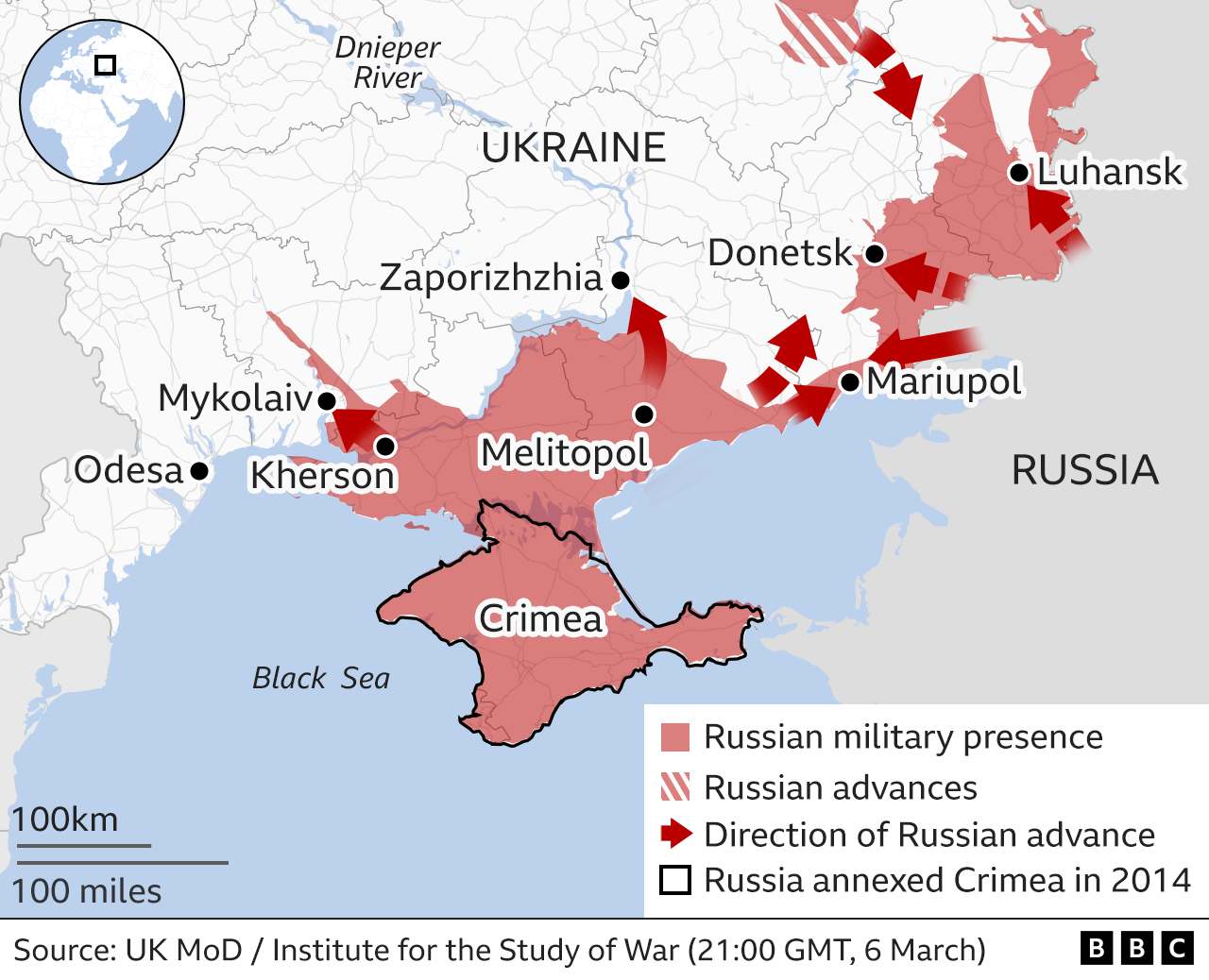
In Mykolaiv rocket strikes are reported to have caused fires in residential areas.
Russian control of Mykolaiv would clear the way for an advance on the port of Odesa.
The US says an assault on Odesa is not imminent, but Ukrainian forces in the city are preparing for an attack in the coming days.
Analysts say a Ukrainian defeat in Odesa would be hugely significant.
It would seal off Ukraine from its coastline and secure a path for Russian forces from Donetsk to the Moldovan border.
Strike from the east
Kharkiv, the second-largest city in Ukraine, has faced intense aerial bombardment in recent days.
Large residential areas in the city have been hit by artillery rounds, which UN prosecutors are now investigating as a possible war crime.
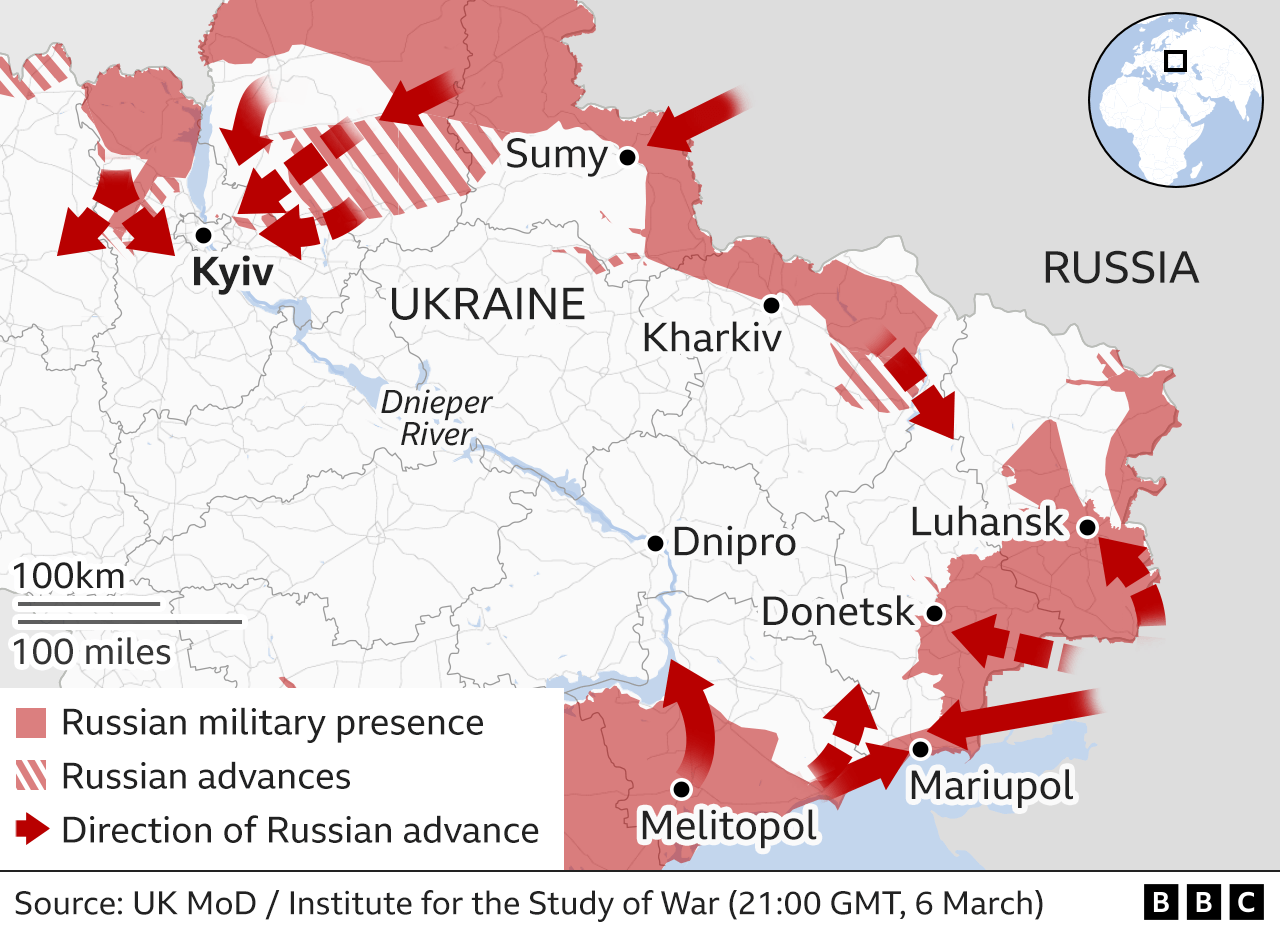
But a Ukrainian counter-offensive near Kharkiv damaged Russian front-line units, according to the ISW, and there are claims Ukrainian forces pushed the Russians back to the border north west of Kharkiv.
There are also thought to be about 15,000 Russian-backed separatists in Donetsk and Luhansk, who may help a Russian advance. Ukraine believes the figure is higher.
Thousands flee across borders
Since the invasion began, more than 1.7 million people have fled Ukraine, according to the United Nations. It’s the fastest-growing refugee crisis in Europe since World War II.
Unicef, the UN children’s agency, believes around half of them are children and young people.
Refugees are crossing the borders to neighbouring countries to the west, such as Poland, Romania, Slovakia, Hungary and Moldova.
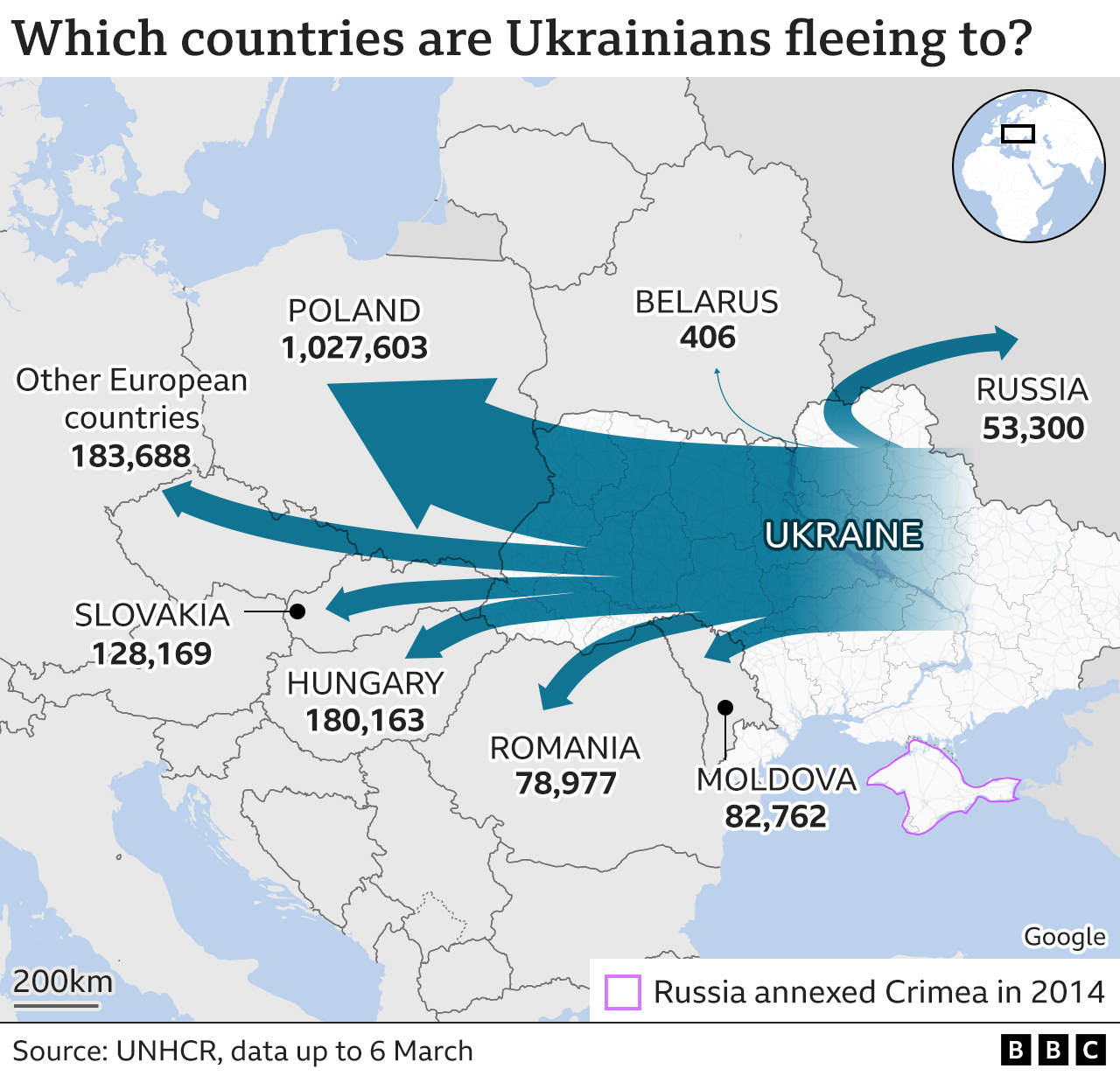
By David Brown, Bella Hurrell, Dominic Bailey, Mike Hills, Lucy Rodgers, Paul Sargeant, Mark Bryson, Zoe Bartholomew, Sean Willmott, Sana Dionysiou, Joy Roxas and Gerry Fletcher.

About these maps
To indicate which parts of Ukraine are under control by Russian troops we are using daily assessments published by the Institute for the Study of War with the American Enterprise Institute’s Critical Threats Project.
From 2 March this daily assessment differentiated between “Assessed Russian-controlled Ukrainian territory” and “Assessed Russian advances in Ukraine”, the latter indicating areas where Russians are believed to have launched attacks from but which they do not control.
To show key areas where advances are taking place we are also using daily updates from the UK Ministry of Defence and BBC research. To show locations where there have been attacks or explosions we are using reports that have been verified by the BBC.
The situation in Ukraine is fast moving and it is likely there will be times when there have been changes not reflected in the maps.

